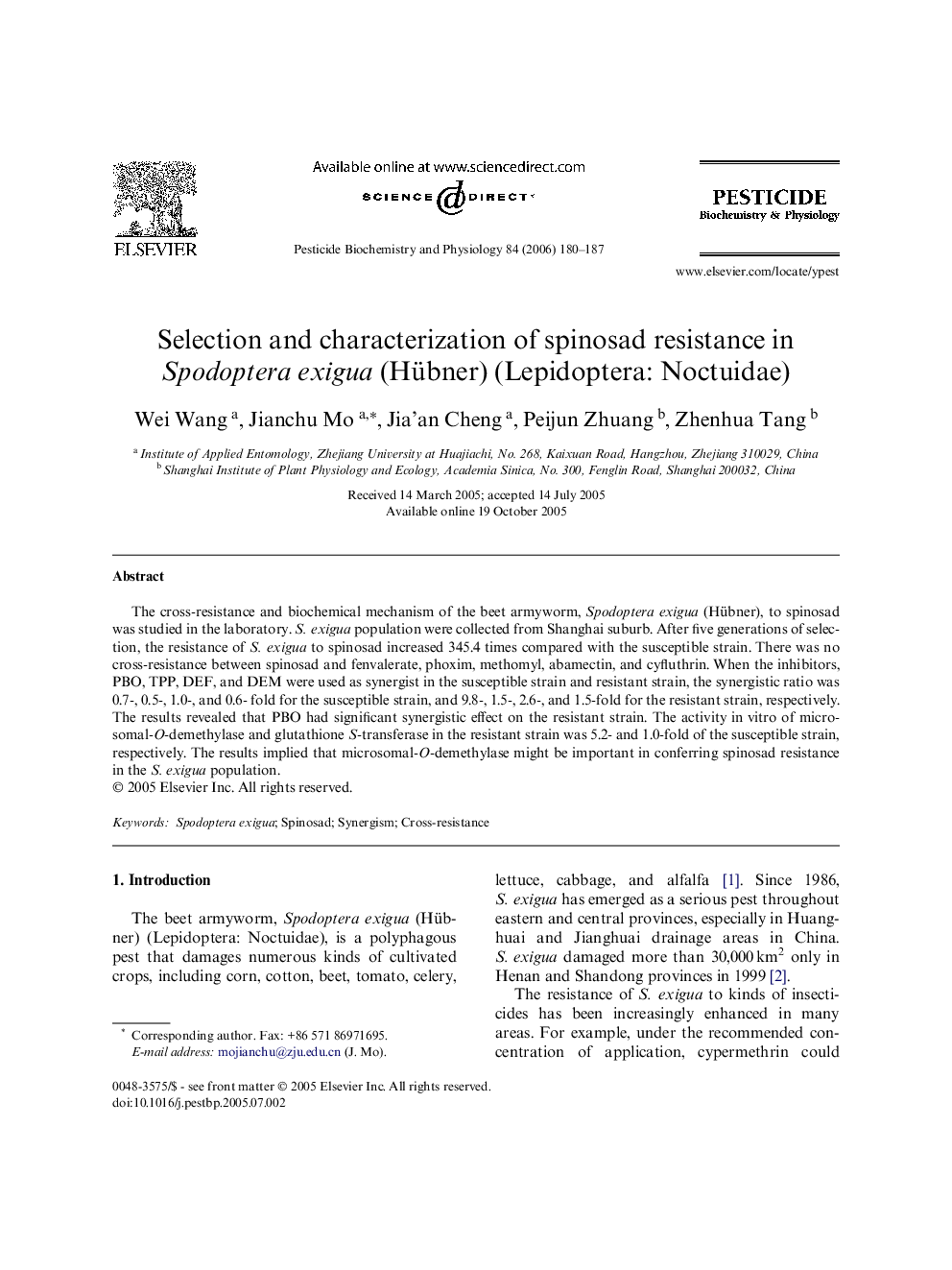| Article ID | Journal | Published Year | Pages | File Type |
|---|---|---|---|---|
| 2010310 | Pesticide Biochemistry and Physiology | 2006 | 8 Pages |
The cross-resistance and biochemical mechanism of the beet armyworm, Spodoptera exigua (Hübner), to spinosad was studied in the laboratory. S. exigua population were collected from Shanghai suburb. After five generations of selection, the resistance of S. exigua to spinosad increased 345.4 times compared with the susceptible strain. There was no cross-resistance between spinosad and fenvalerate, phoxim, methomyl, abamectin, and cyfluthrin. When the inhibitors, PBO, TPP, DEF, and DEM were used as synergist in the susceptible strain and resistant strain, the synergistic ratio was 0.7-, 0.5-, 1.0-, and 0.6- fold for the susceptible strain, and 9.8-, 1.5-, 2.6-, and 1.5-fold for the resistant strain, respectively. The results revealed that PBO had significant synergistic effect on the resistant strain. The activity in vitro of microsomal-O-demethylase and glutathione S-transferase in the resistant strain was 5.2- and 1.0-fold of the susceptible strain, respectively. The results implied that microsomal-O-demethylase might be important in conferring spinosad resistance in the S. exigua population.
